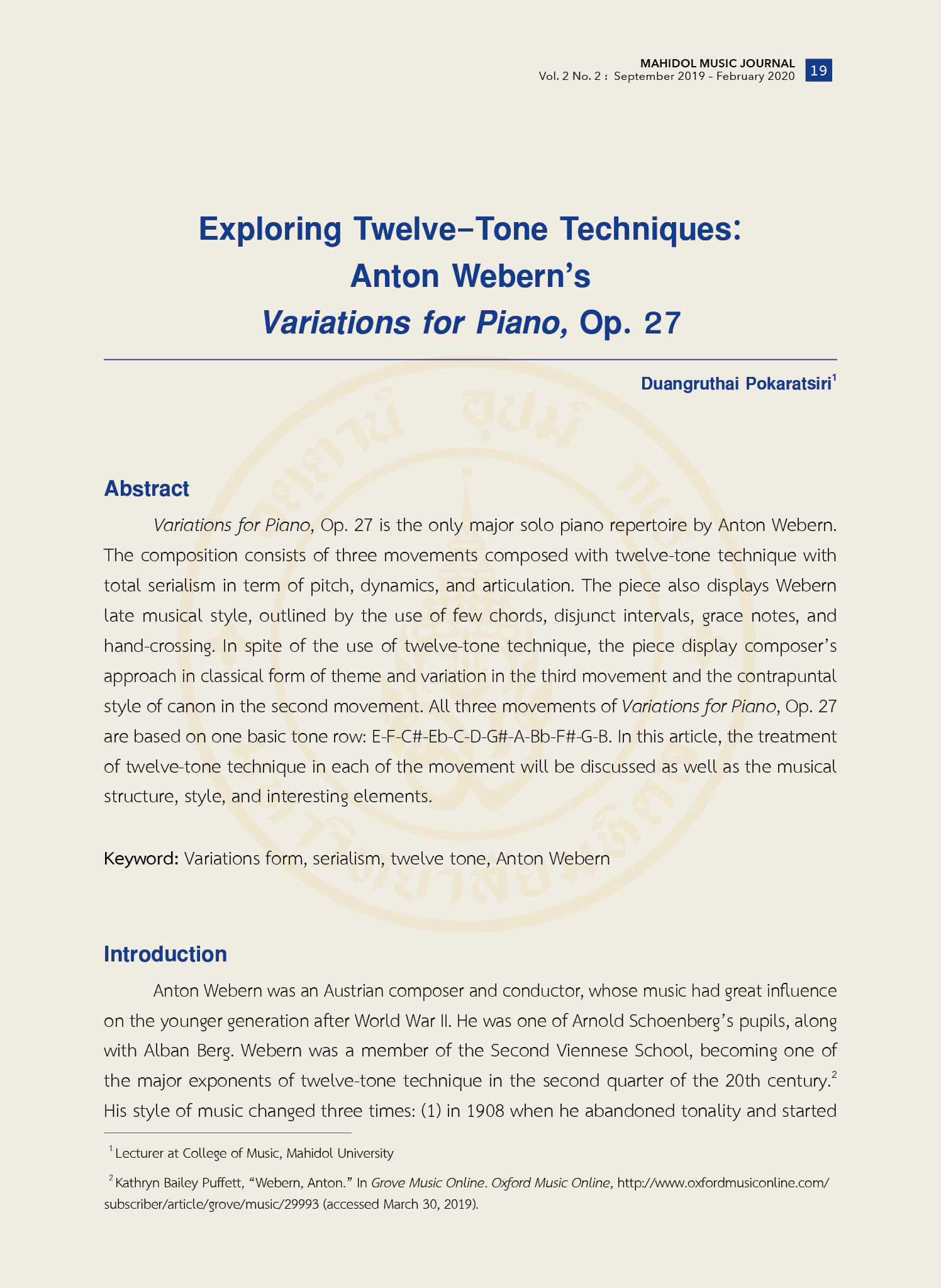Exploring Twelve-Tone Techniques: Anton Webern’s Variations for Piano, Op. 27
Keywords:
Variations form, serialism, twelve tone, Anton WebernAbstract
Variations for Piano, Op. 27 is the only major solo piano repertoire by Anton Webern. The composition consists of three movements composed with twelve-tone technique with total serialism in term of pitch, dynamics, and articulation. The piece also displays Webern late musical style, outlined by the use of few chords, disjunct intervals, grace notes, and hand-crossing. In spite of the use of twelve-tone technique, the piece display composer’s approach in classical form of theme and variation in the third movement and the contrapuntal style of canon in the second movement. All three movements of Variations for Piano, Op. 27 are based on one basic tone row: E-F-C#-Eb-C-D-G#-A-Bb-F#-G-B. In this article, the treatment of twelve-tone technique in each of the movement will be discussed as well as the musical structure, style, and interesting elements.

Downloads
Published
How to Cite
Issue
Section
License

This work is licensed under a Creative Commons Attribution-NonCommercial-NoDerivatives 4.0 International License.
The copyright of the article belongs to the author. Published articles represent the views of the authors. The editorial team neither necessarily agree with nor take any responsibility for the article.





